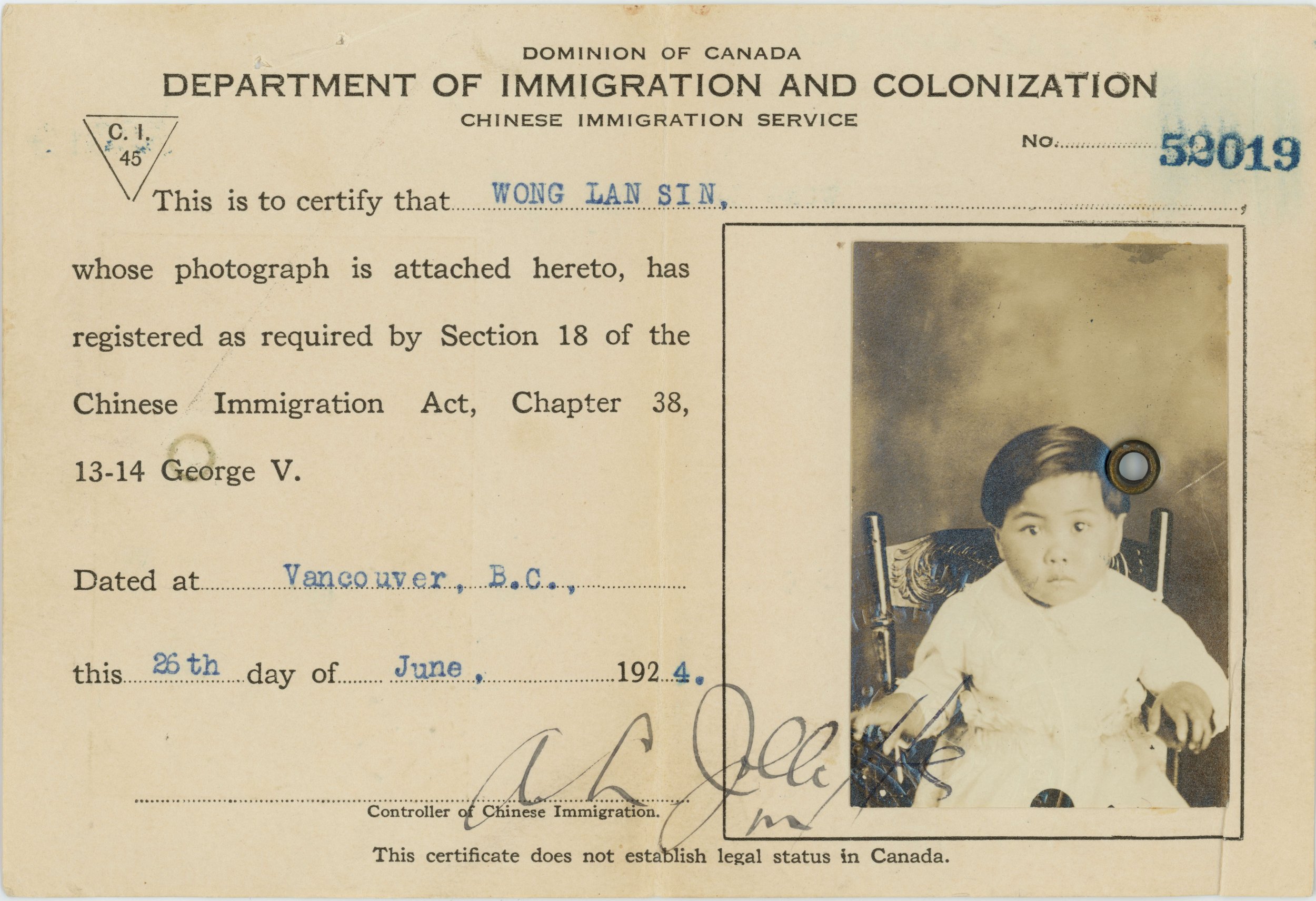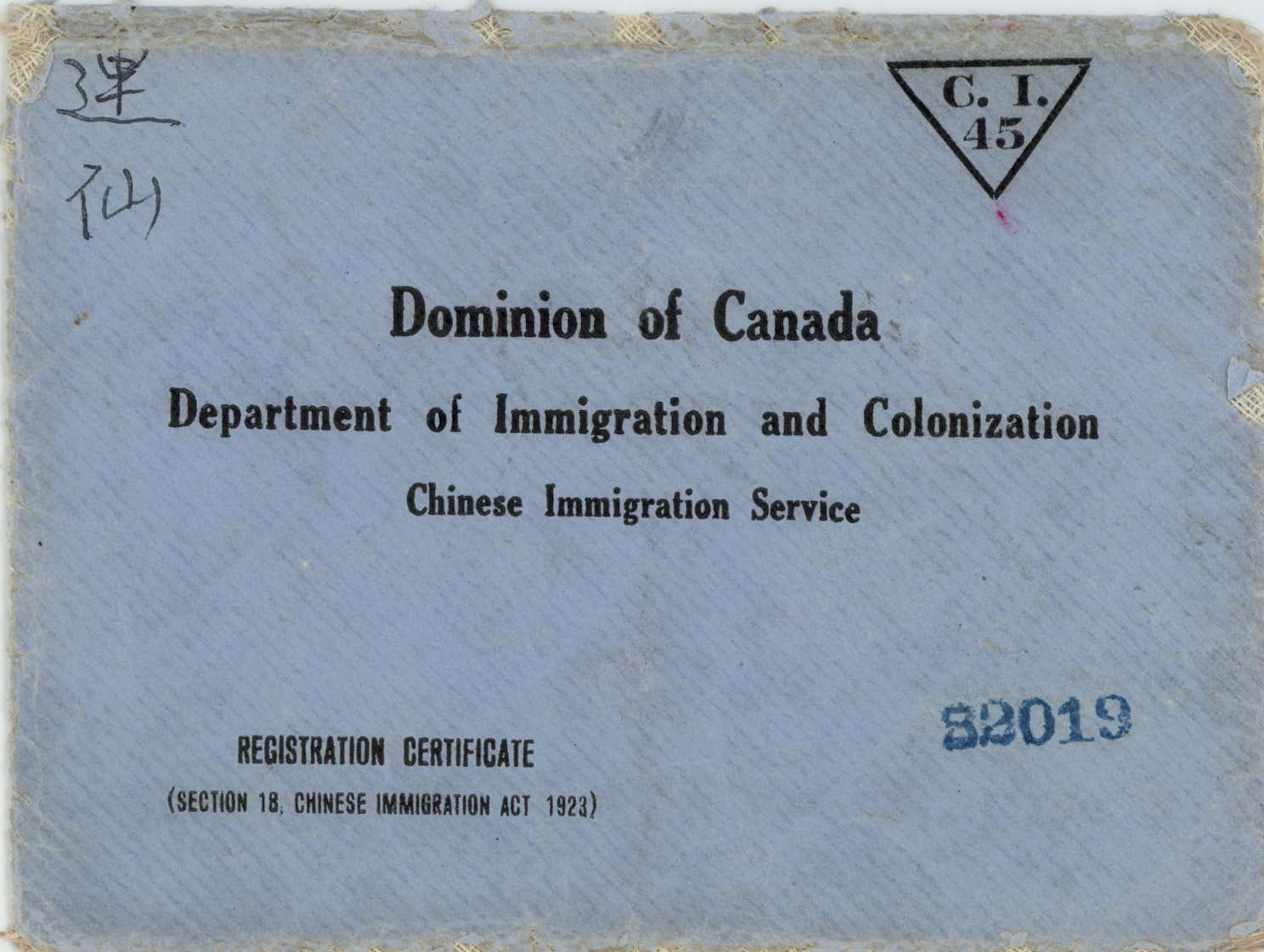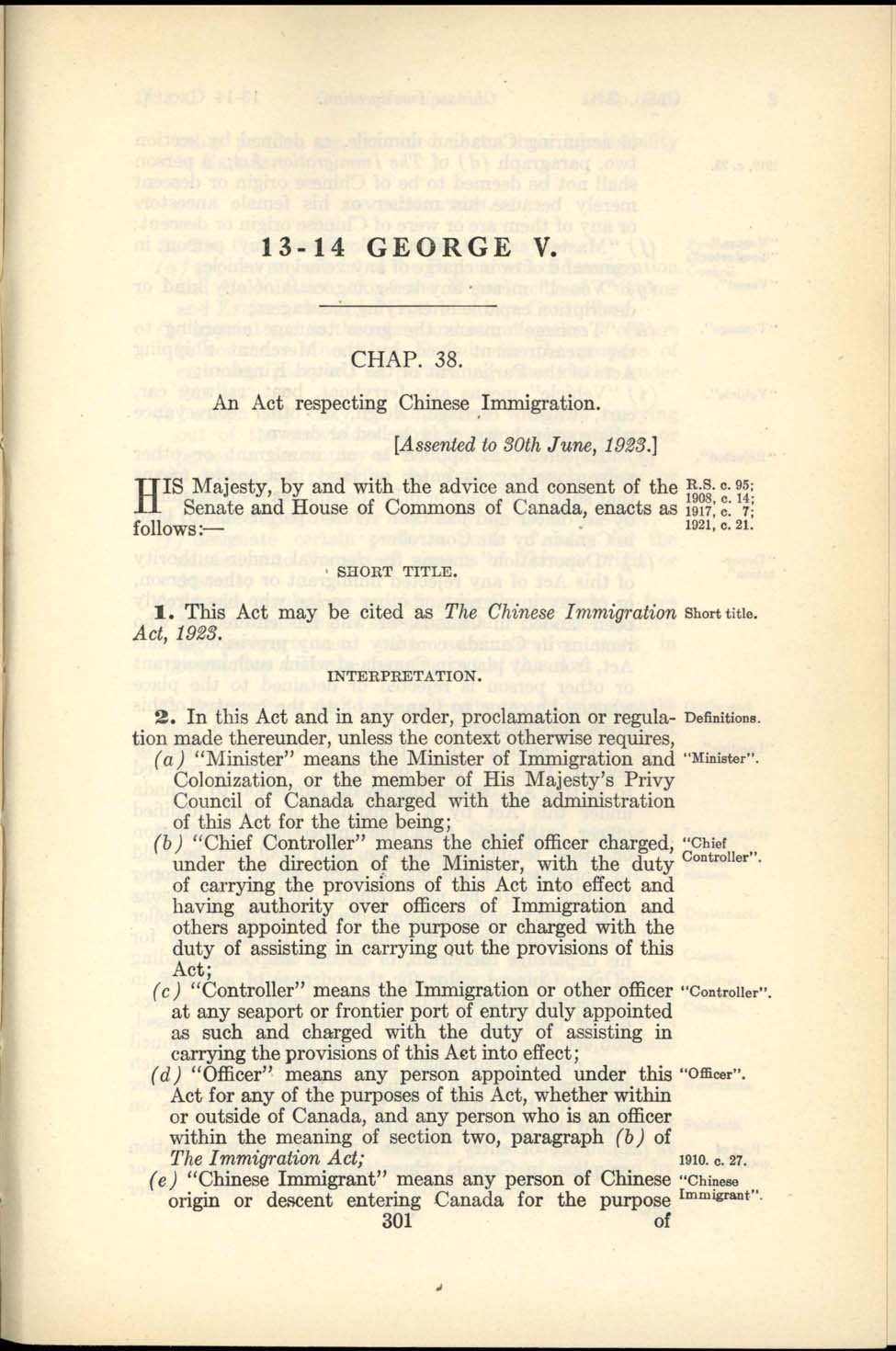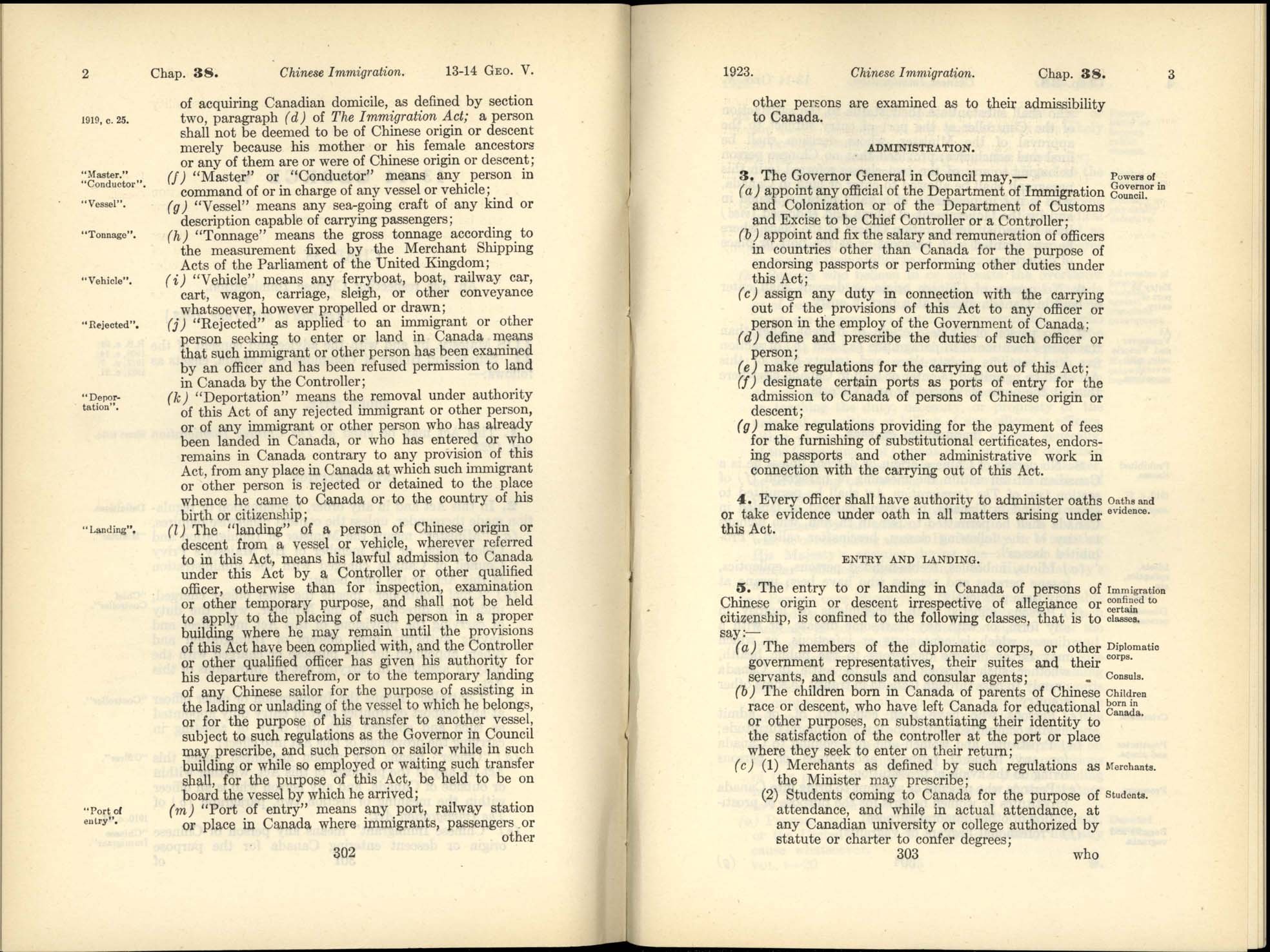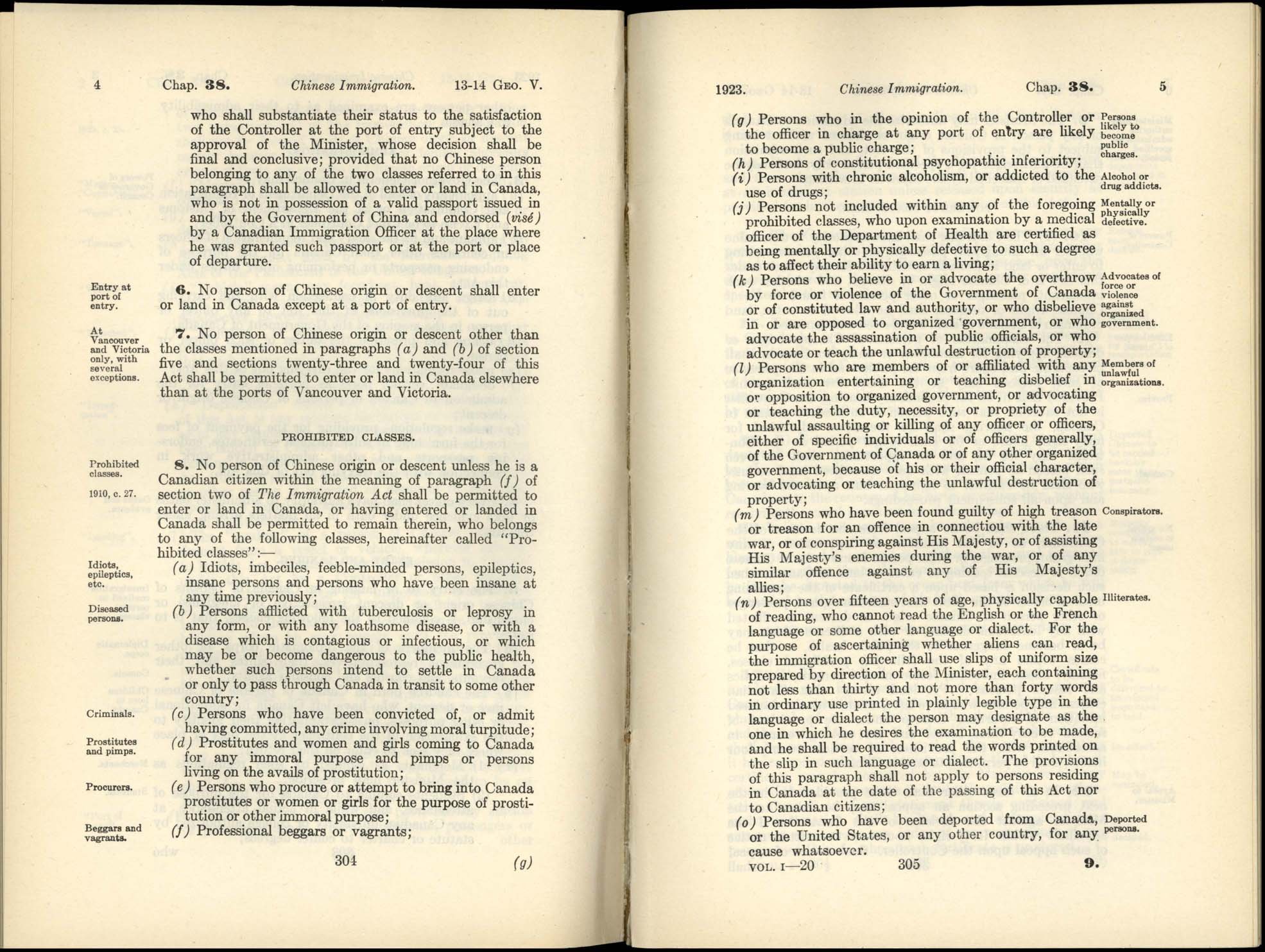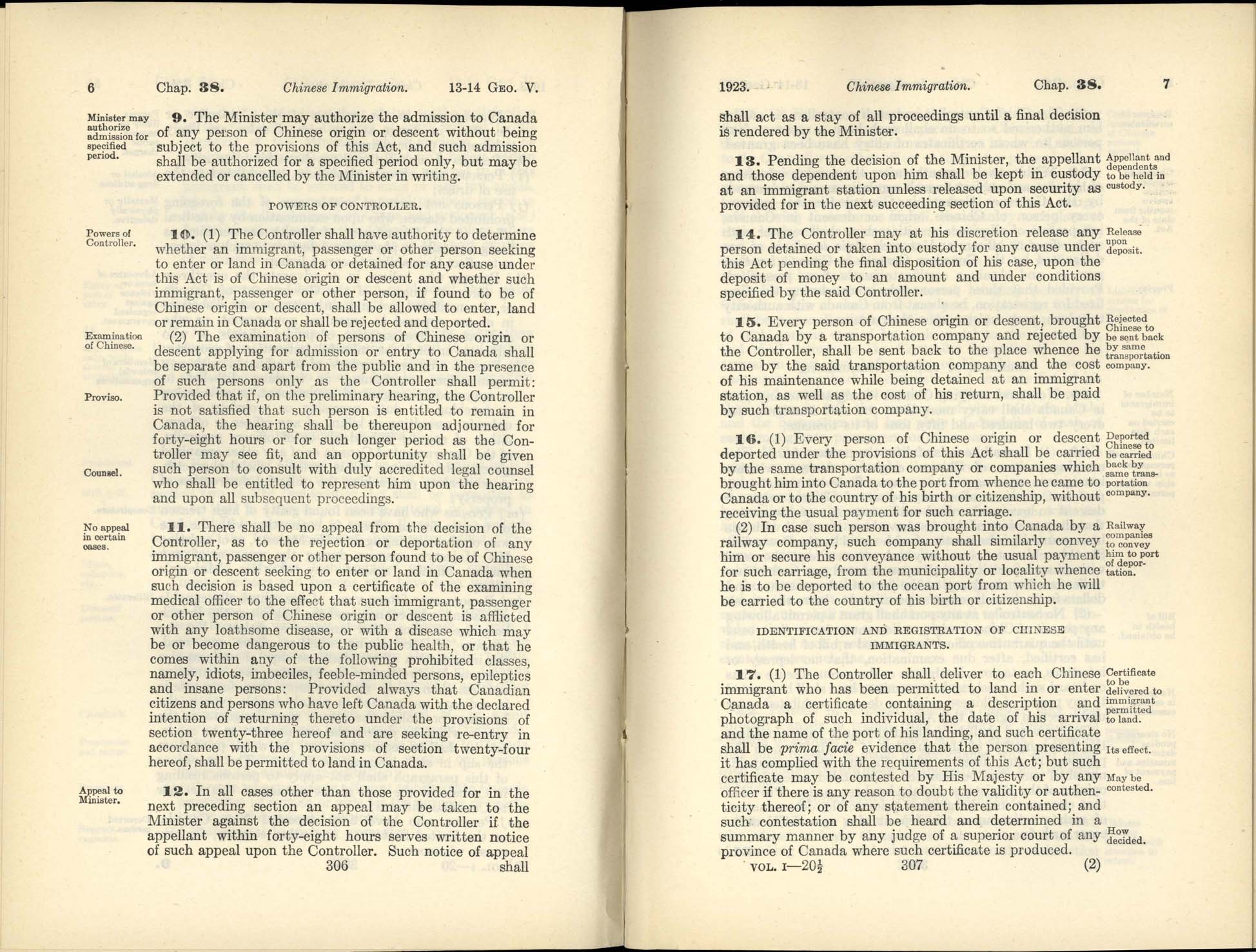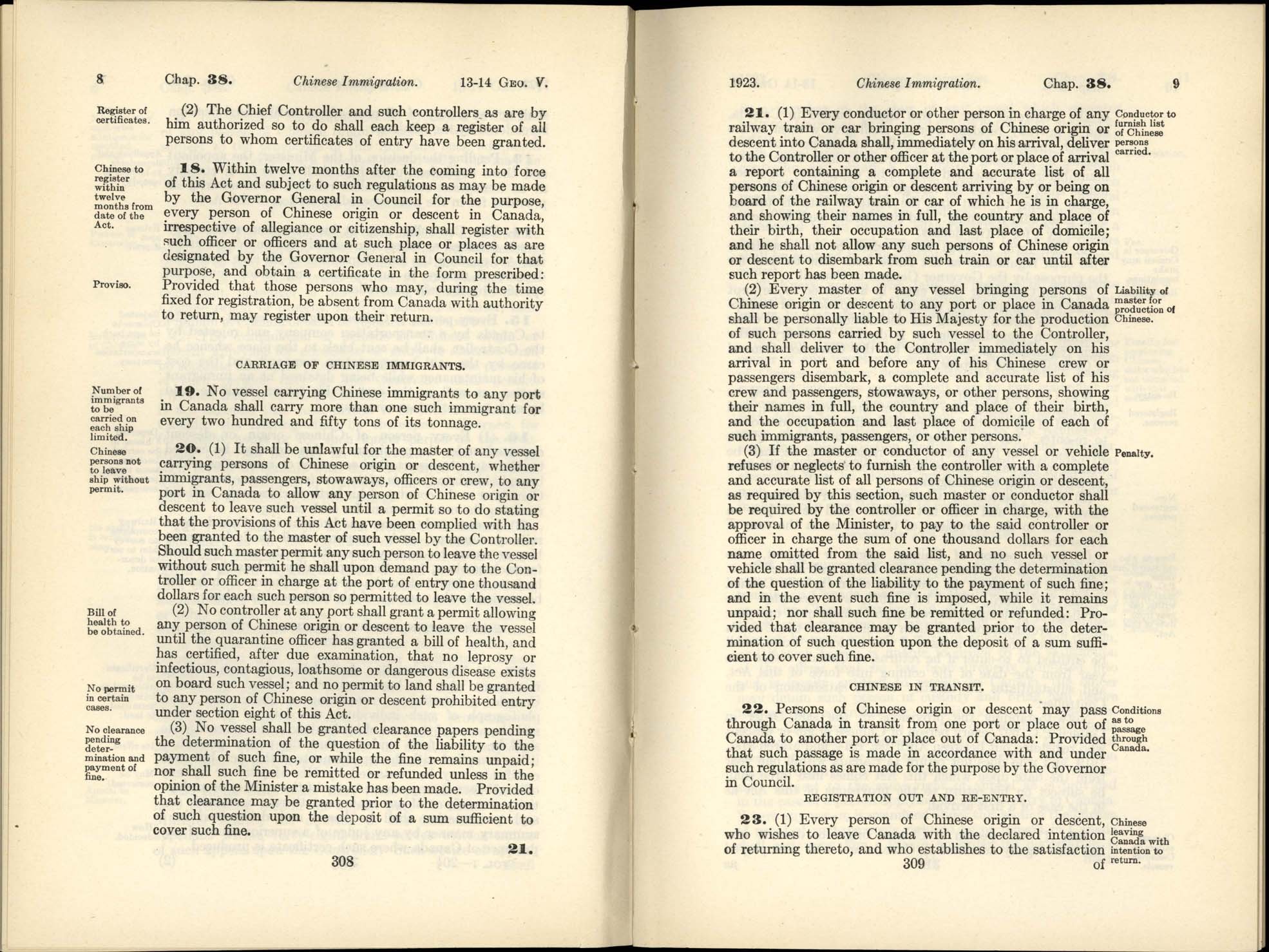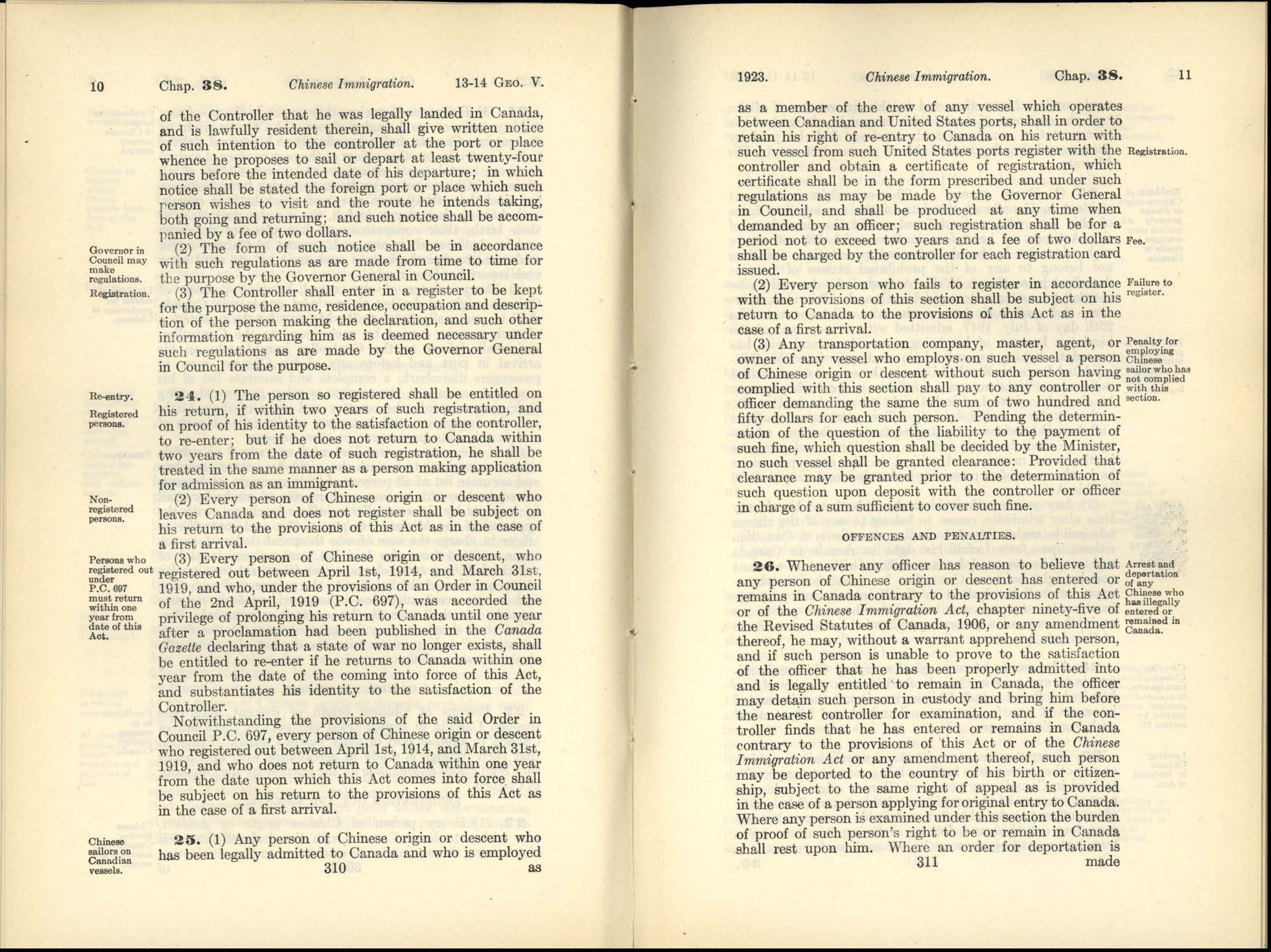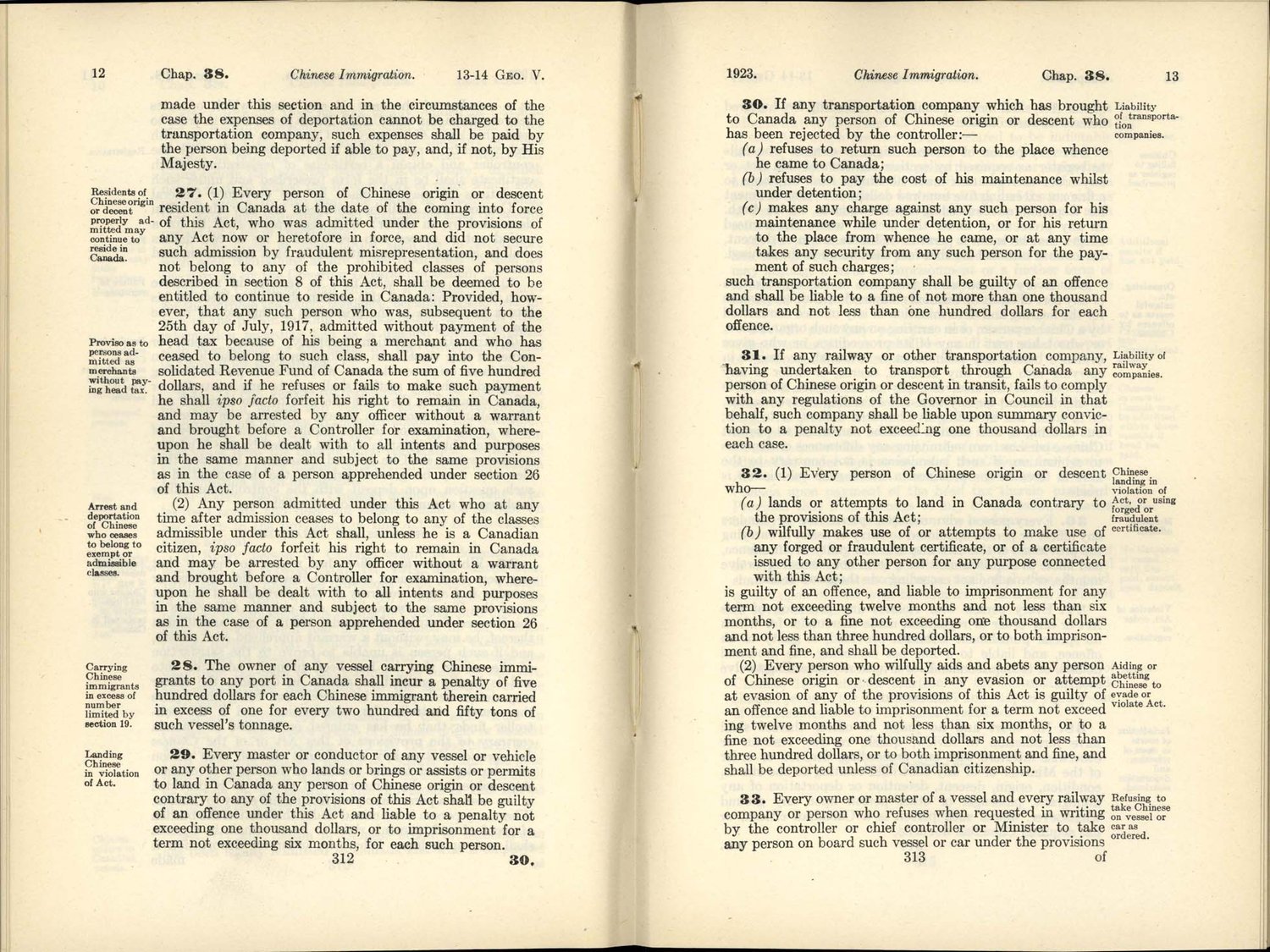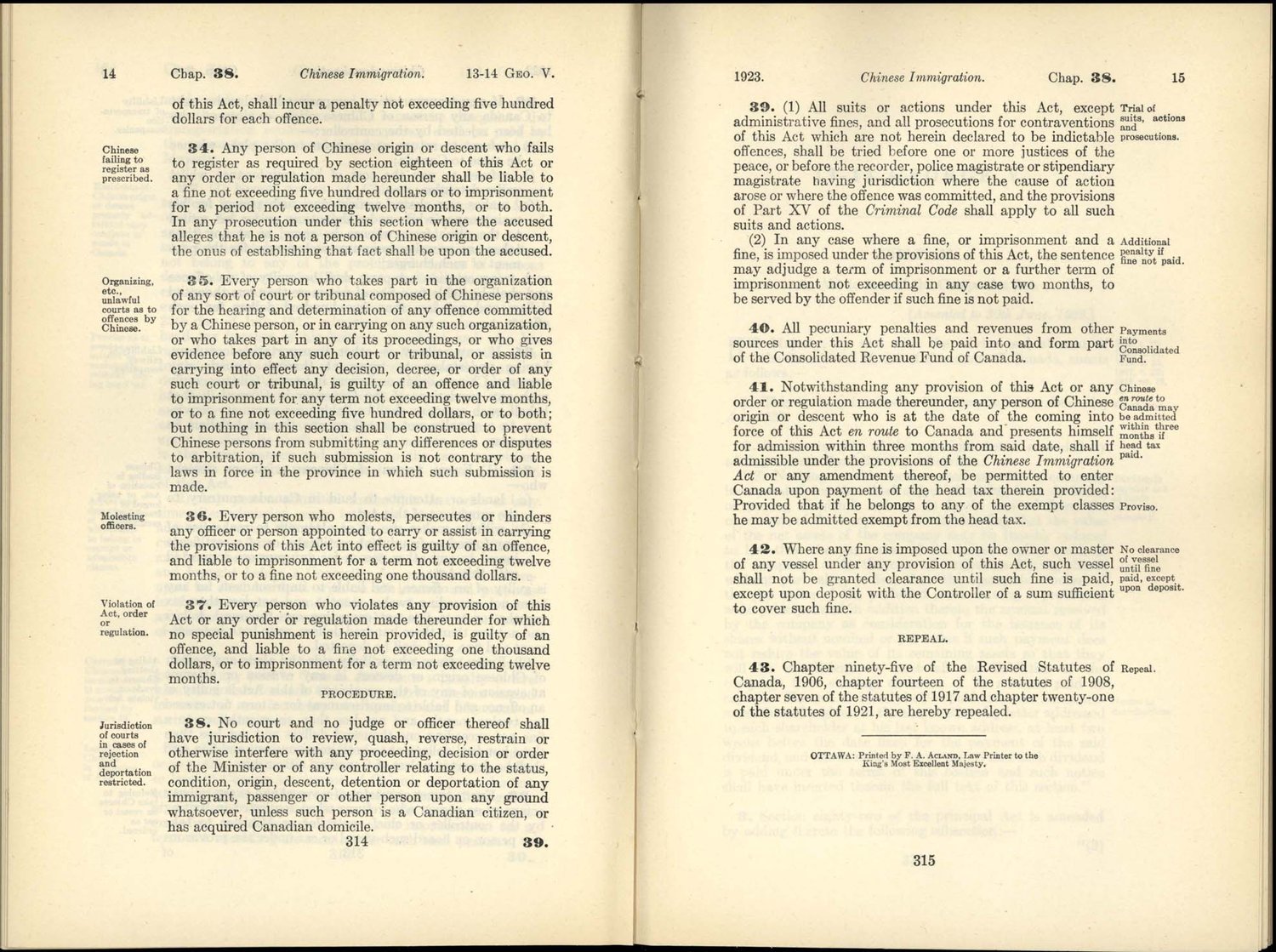The 1923 Chinese Exclusion Act
COURTESY OF THE PAPER TRAIL COLLECTION (UBC LIBRARY)
在介绍了一些司法定义之后,该法案详细规定了哪些人不得进入加拿大。第 5 条指出仅有外交人员、学生、游客和商人被允许入境。该法案还限制了其他许多人入境。其中包括"鼓吹或教导攻击或杀害政府官员","叛国罪",以及文盲或吸毒者。
After some introductory statements on definitions, the act makes clear who is excluded from entrance into Canada. The 5th clause allows only diplomats, students, tourists, and merchants. It goes on to restrict many others, deeming them inadmissible. Some of these are cases of those “advocating or teaching the duty, necessity, or propriety of the unlawful assaulting or killing of any officer or officers,” or those “guilty of high treason.” Others, however, are targeting the illiterate, or drug users.
该法案在第 8 条中明确规定,"任何属于‘禁止类别’华人或华裔,除非是《移民法》第 2 条(f)款所指的加拿大公民,否则不得在加拿大居留”。从根本上说,这赋予了政府任意拒绝华人再次入境的权利。这主要包括那些被视为不受欢迎的人,如性工作者和病人。
The act made very clear in its 8th clause that “no person of Chinese origin or descent unless he is a Canadian citizen with the meaning of paraph (f) of section two of The Immigration Act shall be permitted to remain therein, who belongs to any of the following classes, hereinafter called “Prohibited classes.” Essentially, this gave the government the right to refuse re-entry to people who were in the prohibited classes. This mostly consisted of those seen as undesirable such as sex workers, and the ill.
该法案的限制措施极为缜密。除了大规模禁止华人入境,该法案还对极少数能够入境的华人施加了进一步的限制。第 19 条规定,"运载中国移民到加拿大任何港口的船只,每 250 吨运载量仅能搭乘一名中国移民"。此举极大地限制了每艘船上可搭载的华人数量,增加了出入境的难度和成本。
The act was airtight in its restrictions. Aside from barring entry to Chinese people, it placed further restrictions on the few who were able to enter. Clause 19 states that “no vessel carrying Chinese immigrants to any port in Canada shall carry more than one such immigrant for every two hundred and fifty tons of its tonnage.” This limited the number of Chinese people that could travel on each vessel greatly, making it more difficult and expensive to enter and leave.
1923《排华法案》同时规定加拿大华人离境期限最长两年。如果他们在两年期限内没有返回加拿大,就会受到该法案的驱逐措施的限制。 为了便于采取这些措施,加拿大政府对华裔加拿大人进行了严格的证件登记。这也是为了遏制 "纸生仔 "形式的非法移民。所谓 "纸生仔",是指持他人证件返回加拿大的人。
The act allowed for the departure of Chinese Canadians for up to two years. If they did not return to Canada within a two year timeframe, they would then be subject to the exclusionary measures of the act. To facilitate these measures, Chinese Canadians were documented rigorously. This was also an attempt to curb illegal immigration in the form of paper sons. Paper sons were men who returned to Canada on someone else’s papers.
除此之外,该法案旨在对运送华人被拒的船运及铁路公司进行经济处罚。该法案第 15 条规定,运输公司应承担扣留和遣返的费用。第 16 条规定了类似的罚款,由公司负责支付将华人驱逐出加拿大的费用。第 30 和 31 条再次征收更多罚款,对不遵守政府苛例的行为处以高达 1000 加元的罚款。
The act sought to punish shipping and rail companies with financial punishments for bringing Chinese people who were rejected. Clause 15 of the act lays the financial burden on the transportation company for the cost of the detainment and return. Clause 16 lays similar fines, with the companies being responsible for paying for the cost to deport Chinese people out of Canada. Clauses 30 and 31 levy more fines again, with fines of upwards of $1000 for failing to comply with government restrictions or orders.
颁布于1923年的《排华法案》直到二战后的 1947 年才被废除。在排华法案实施的几十年间,加拿大的华裔人口锐减近四分之一。华工们被迫与家人分离,因为苛例使他们无法将家人带来加拿大。与此同时,加拿大华人仍然面临着来自个人、组织和政府的种族主义和歧视。直到 1967 年,加拿大方才取消了所有基于种族的移民政策。经过 20 多年的大力游说,哈珀政府于 2006 年 7 月 22 日发表了道歉声明。联邦政府向缴纳人头税的幸存者发放了赔偿金,但许多人认为这还不够。随后,省和地方领导人发表了进一步道歉。在今天的加拿大,加拿大华人仍然面临着种族主义和歧视。尤其是在 COVID-19 疫情期间,种族主义大有抬头之势。
The act would only be repealed in 1947 after the end of the Second World War. For the decades of the exclusion act, the Chinese population in Canada dropped by nearly a quarter. Men lived without their families, unable to help them immigrate to the country. All the while they still faced racism and discrimination from individuals, organizations, and the government. It wasn’t until 1967 that all race-based immigration policies were removed from Canadian law. After immense lobbying for more than 20 years, the Harper government issued an apology on July 22, 2006. Money was given to survivors of the head tax, however, many felt that this was not enough. Further apologies from provincial and local leaders would follow. Chinese Canadians have continued to face racism and discrimination in Canada, with a resurgence of this racism during the years of the COVID-19 Pandemic.
Included below are scans of the Act itself. Source: Chinese Immigration Act, 1923 | Canadian Museum of Immigration at Pier 21, Library and Archives Canada. Statutes of Canada. An Act Respecting Chinese Immigration, 1923. Ottawa: SC 13-14 George V, Chapter 38


